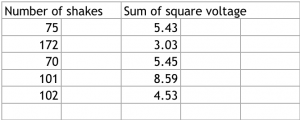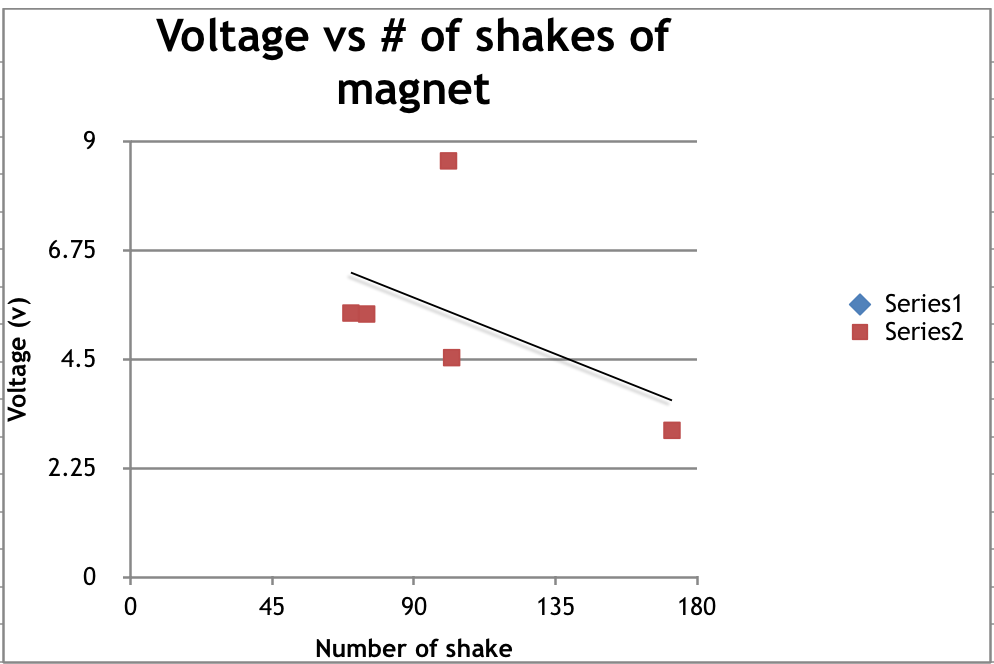Goal of Class Activity
The goal of the class activity was to demonstrate Faraday’s Law that states that changing magnetic fluxes through coiled wires generate electricity, which refers to currents and voltage.
The Experiment
To demonstrate Faraday’s Law, we were given a tube with a magnet in it. When the tube is shaken, the magnet travels back and forth through a coil of wires. Theoretically, the faster the tube is shaken, the more voltage should be generated.
Introduction
In this experiment, we used a tube that connected to the computer. When we shook the tube, the computer registered the sum of squares of the voltage.
Methods
We did 5 trials, 30 seconds each, of shaking the tube. The number of shakes in each 30 second interval were recorded as the independent variable. Each time the tube was shook, it produced a voltage measurement. For each 30-second trial, the voltage measurements were squared, then summed (voltage sum of squares), and this was the dependent variable. The results of the 5 trials were plotted on a scatter plot with a trend line.
Sample Calculation
For the first trial, the tube was shaken 75 times. Each time it was shaken, a number was recorded. Each number was squared, then all these numbers were summed. The result was 5.43 sum of square voltage.
Results
Below are the results from the 5 trials:

The following is a scatter plot of the above numbers with a trend line:

Conclusion
Although Faraday’s Law says that the more shakes should have generated more voltage, this was not the case in the data we collected. This is likely due to measurement error. For example, for the fourth and fifth trials, the number of shakes was almost the same, but the voltage was twice as high in the fourth trial as the fifth trial.










